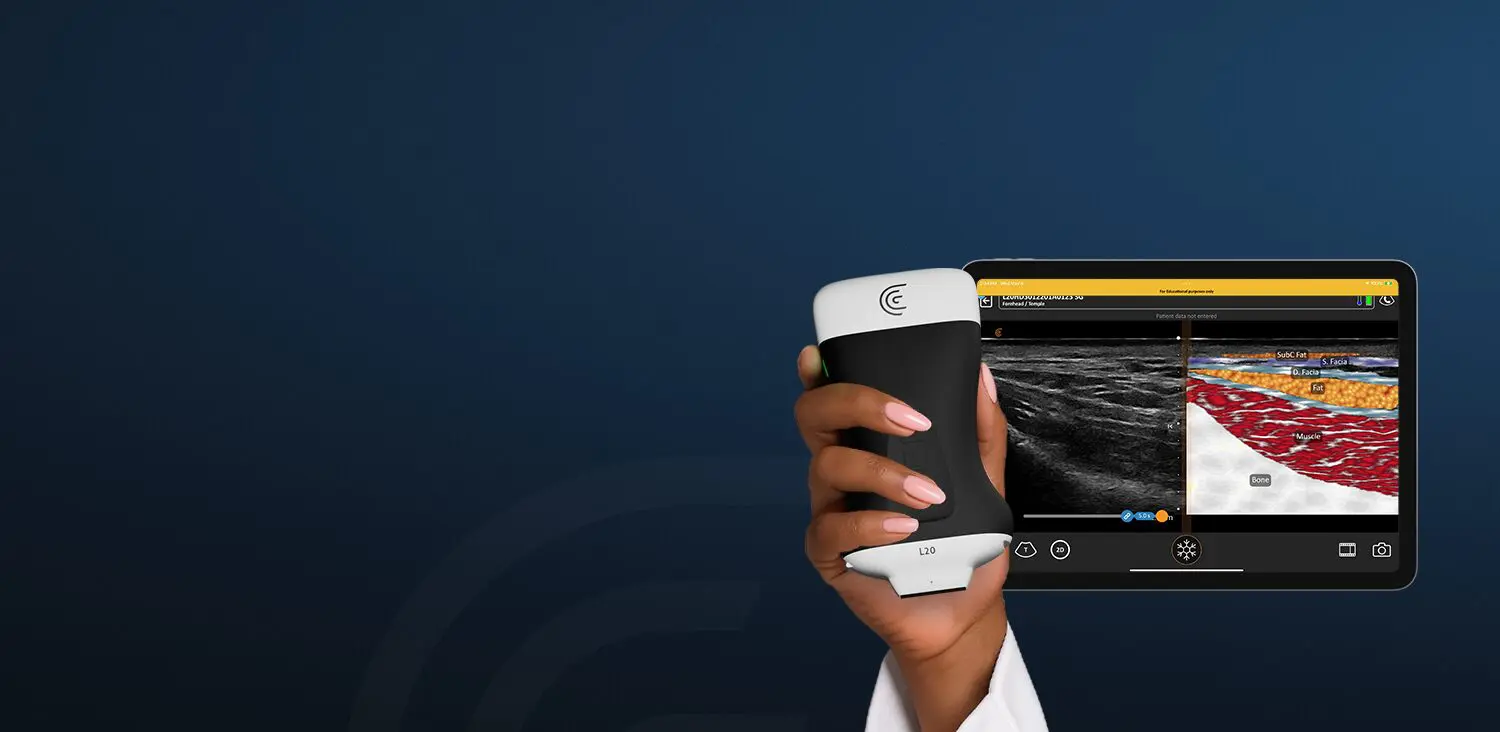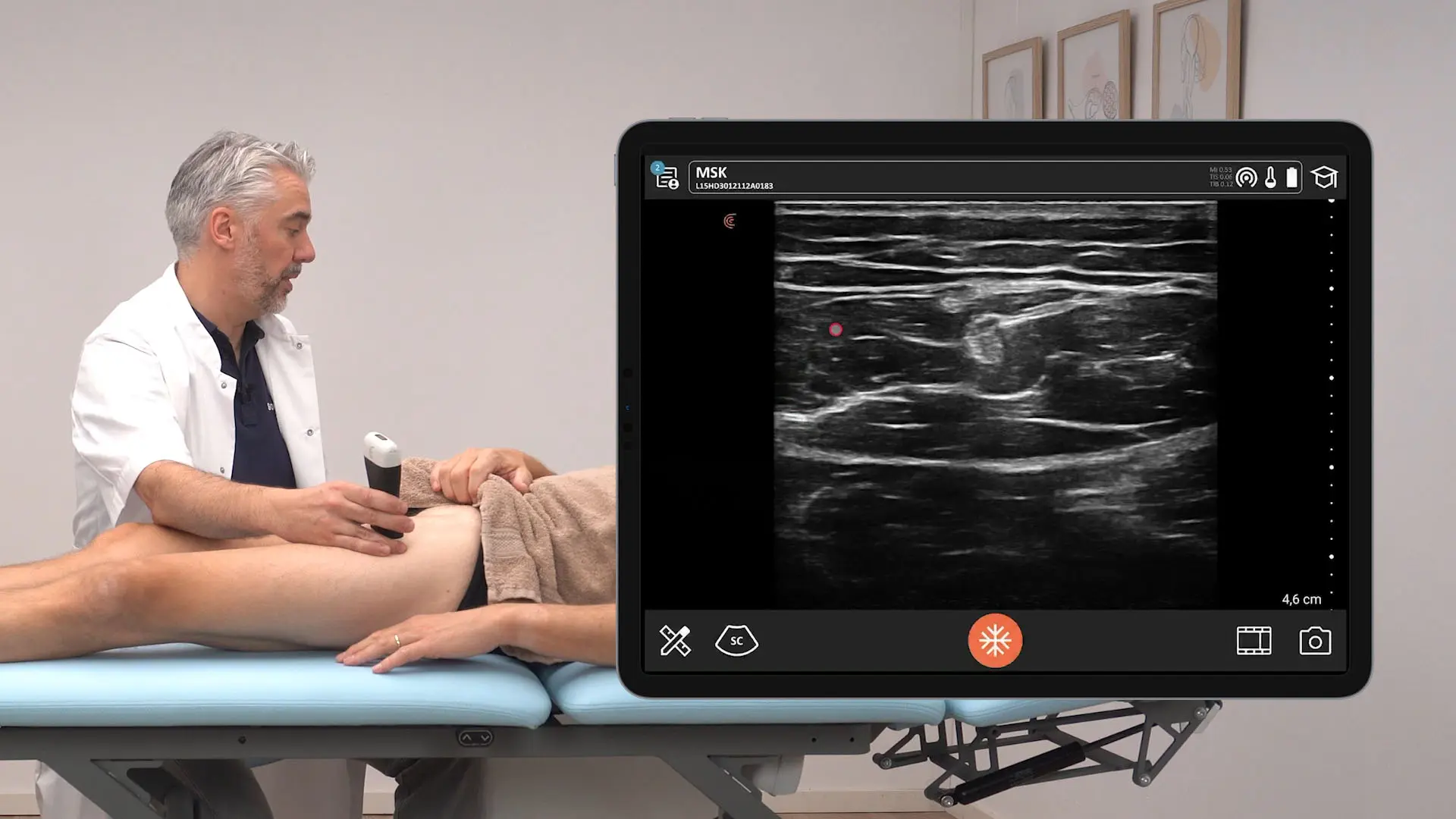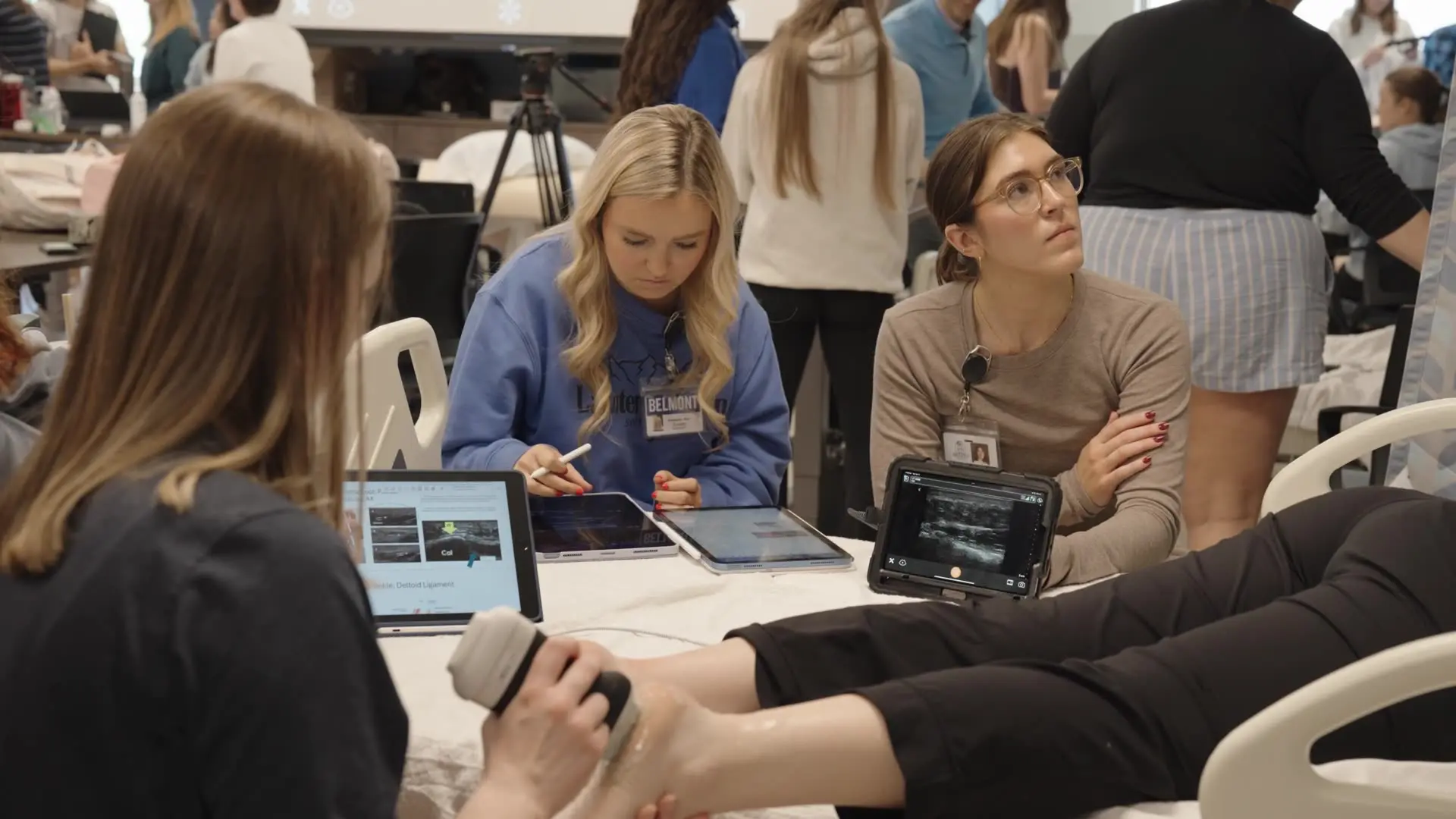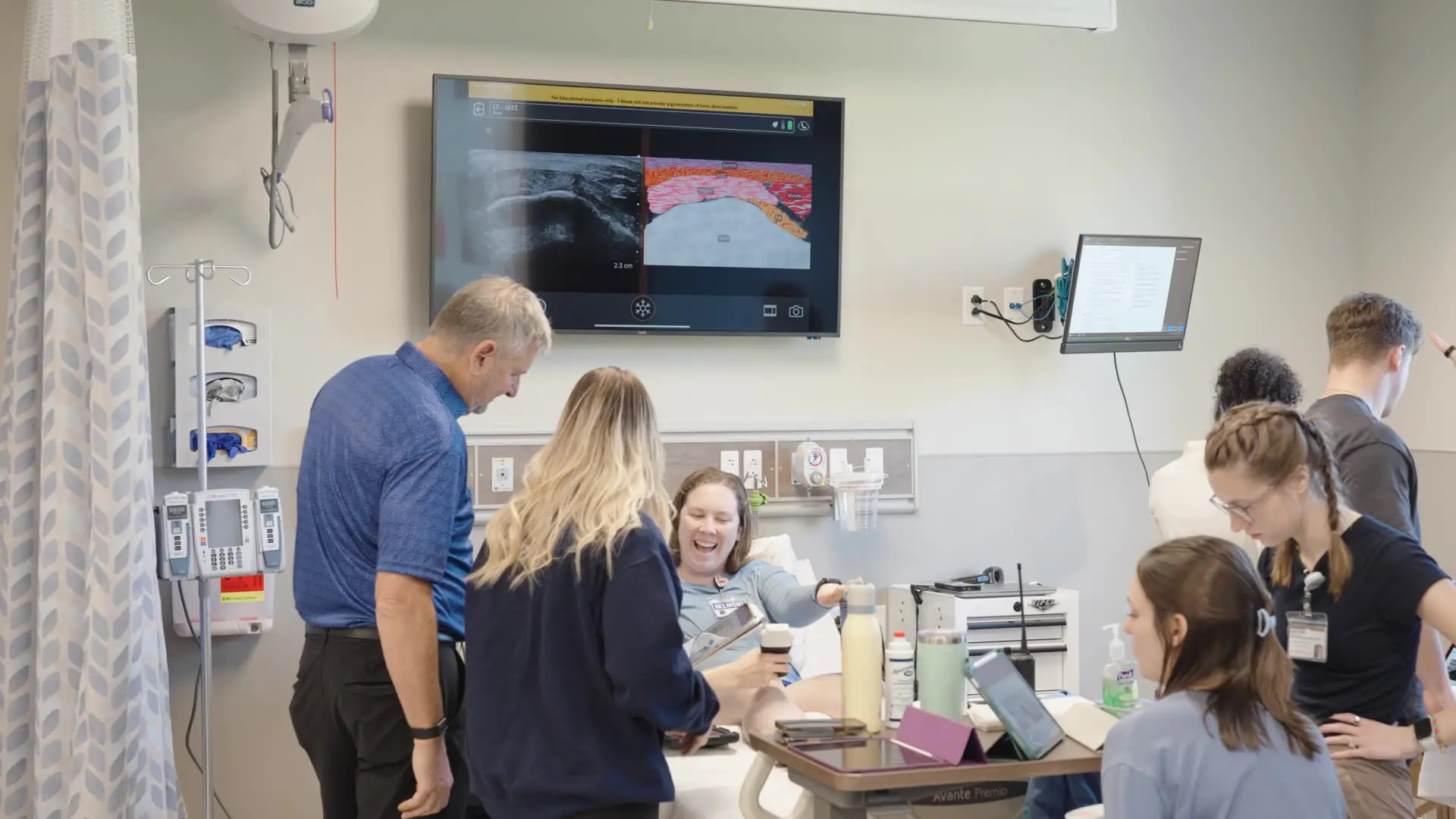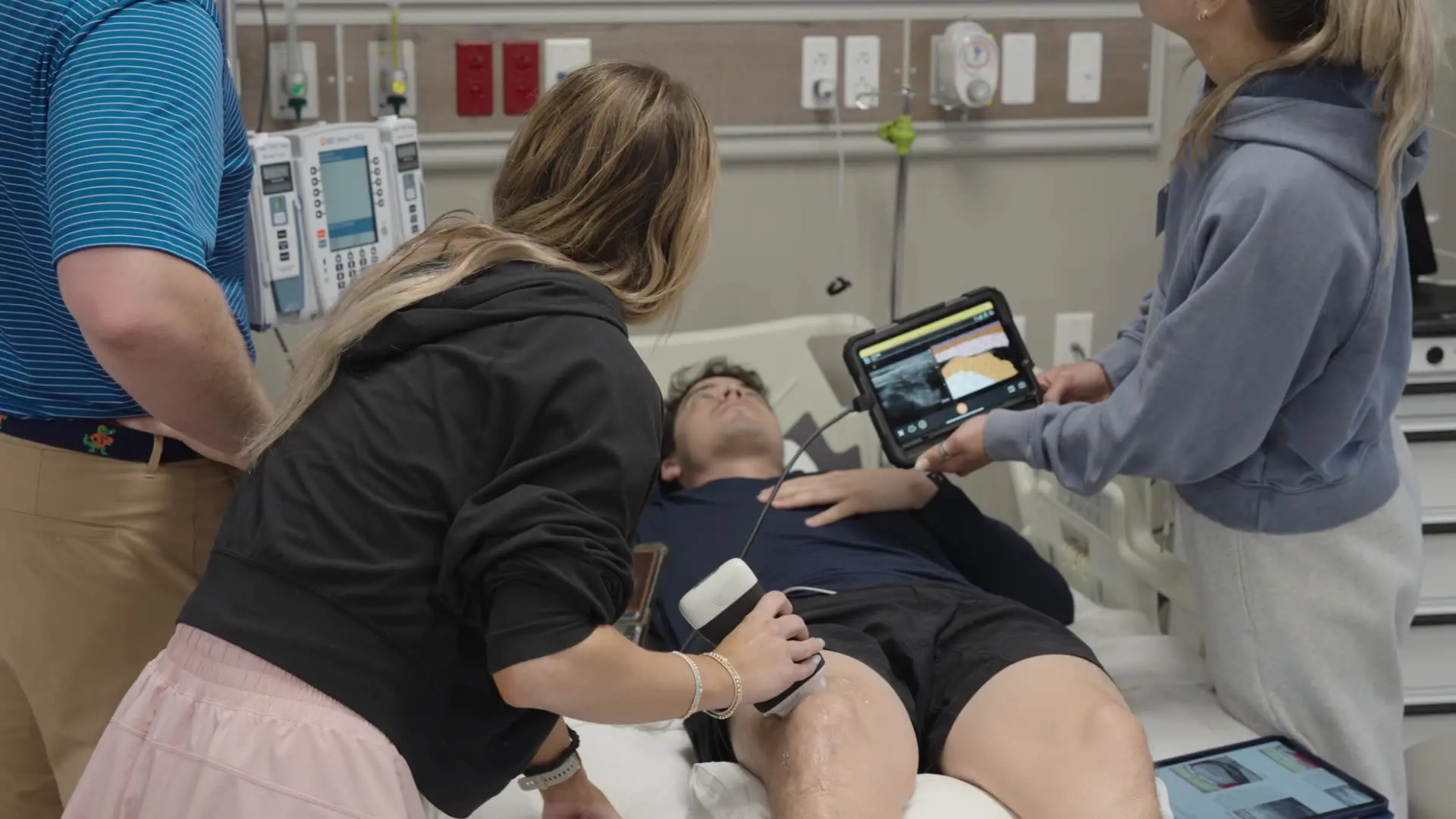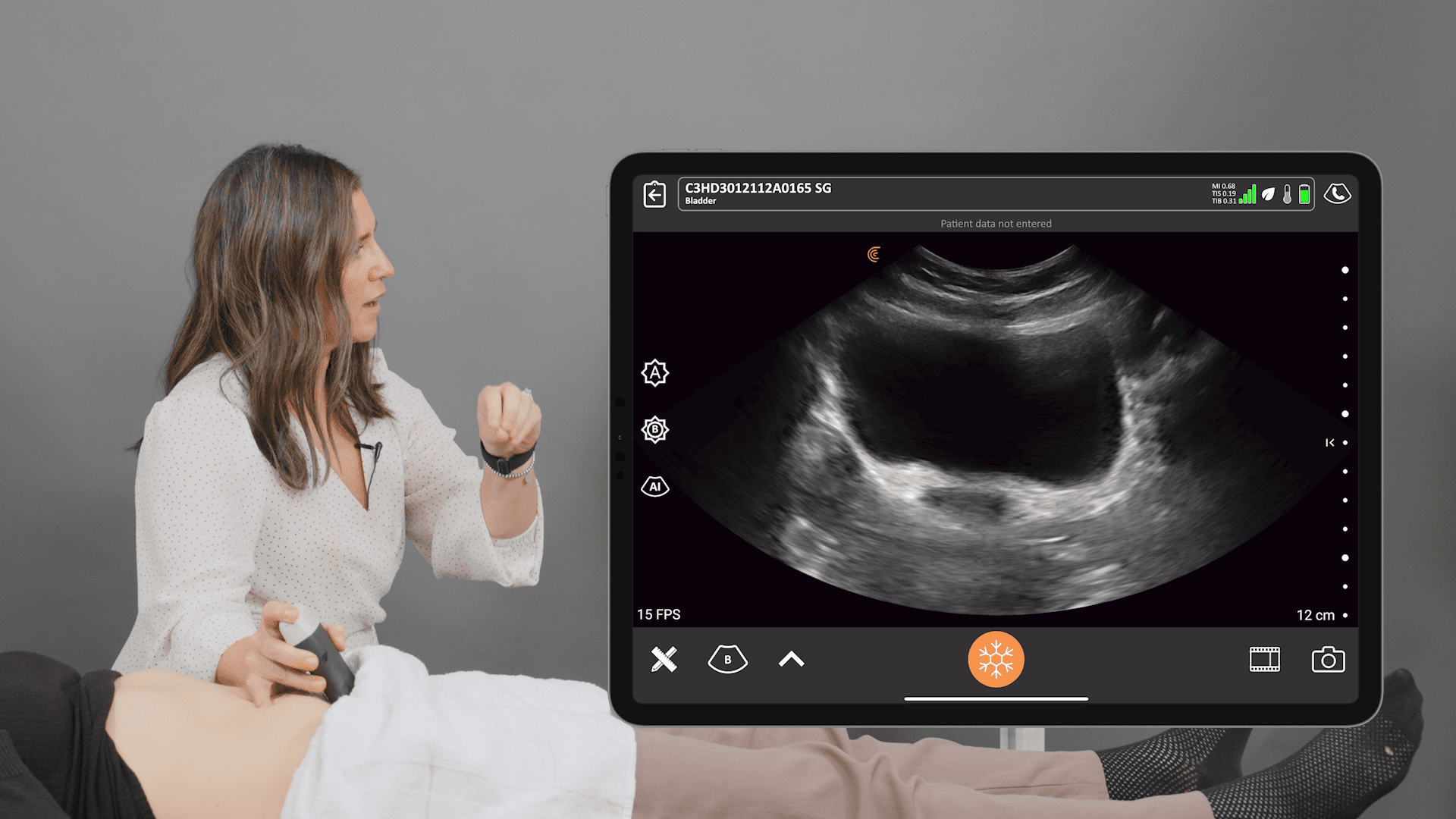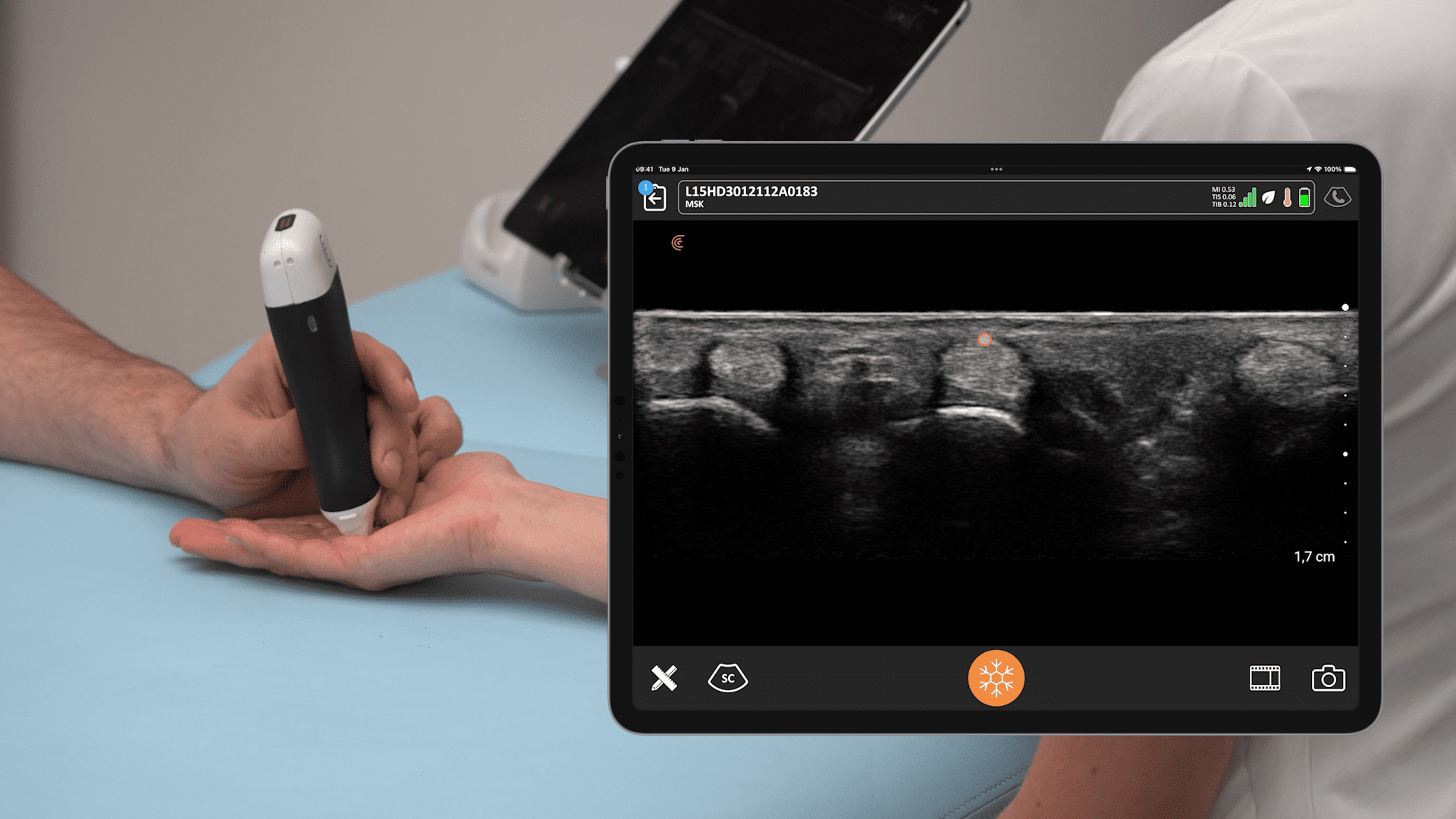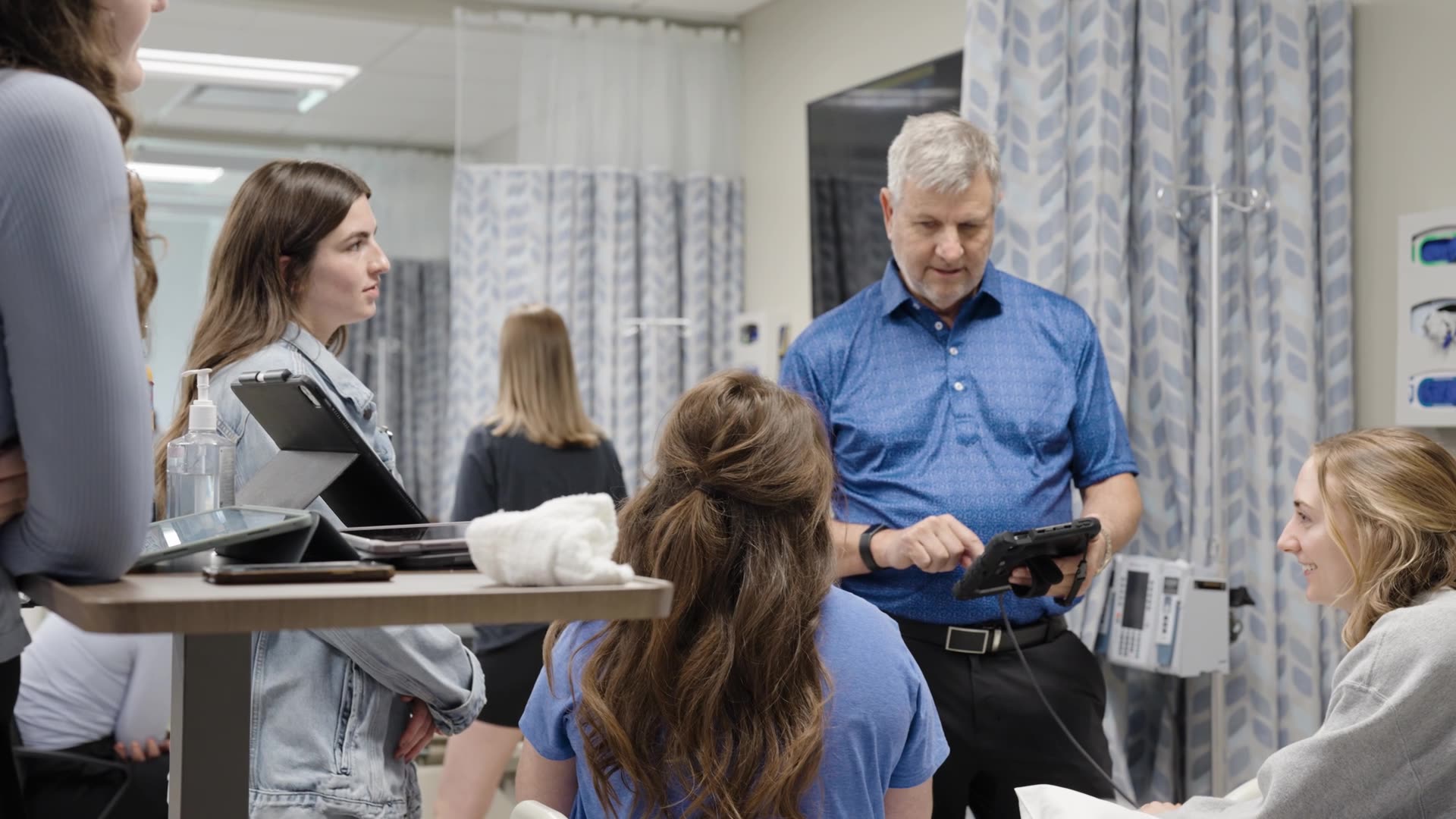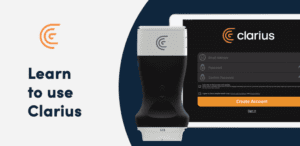Measuring elasticity and stiffness of soft tissue to detect the presence or progression of disease is a well-known diagnostic method. Elastography is an ultrasound imaging modality that is established in medical literature and continues to evolve as a non-invasive diagnostic technique. Until now, it has only been offered on high-end ultrasound systems due to the intensive computer power required to process the data required in real-time.
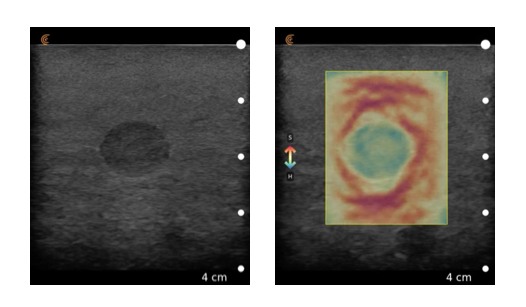
The advanced technology in the new line of Clarius HD scanners makes it possible to offer elastography, which now available as an option on Clarius L7, C3, and EC7 scanners. Once enabled, a user can simply activate it by pressing “E” on the list of available imaging modes.
Greg Fritz PT, DPT, RMSK, a practicing physiotherapist in Washington State, has been testing elastography with his Clarius L7 scanner at his small practice.
I am thankful that Clarius has brought this level of advanced quality imaging to an ultrasound device that is affordable for clinicians like me. With elastography, I have been able to see the softening “echo-signatures” in the anchor tendons of wrist extensors at the elbow (Tennis Elbow) and the color profile of interfibrillar breakdown in Achilles insertional tendinopathies. I am hopeful that with every exposure to this stiffness data, I will develop an improved clinical understanding of its value to the decisions I have to make in intervention options for my patients.”
Some clinical applications for ultrasound elastography
Breast Cancer
Studies are showing that ultrasound elastography can be an effective complementary tool to use in the diagnosis of breast cancer.
Thyroid Disease
Using ultrasound elastography on the thyroid is a non-invasive technique for helping to differentiate between benign and malignant thyroid nodules.
Kidney Pathology
Ultrasound elastography may reduce the need for renal biopsies by helping to assess and monitor disease progression.
Prostate Cancer
As cancer tissue in the prostate tends to be stiffer than normal tissue, ultrasound elastography could be used to visualize abnormal areas.
Musculoskeletal Applications
Elastography is being used to evaluate stiffness and inflammation of muscles and tendons but is still considered a subjective technique.
Interested in learning about the technical evolution of elastography? Download a white paper written by Reza Zahiri.
